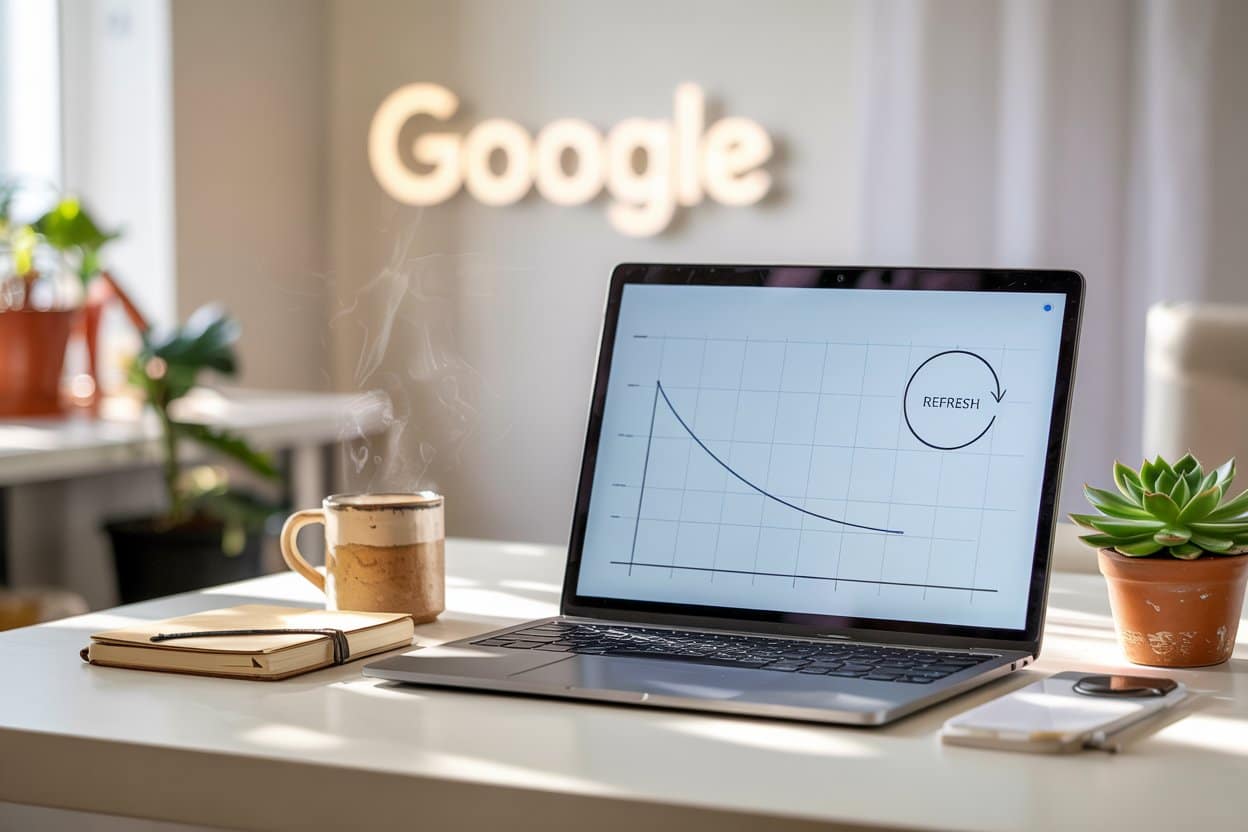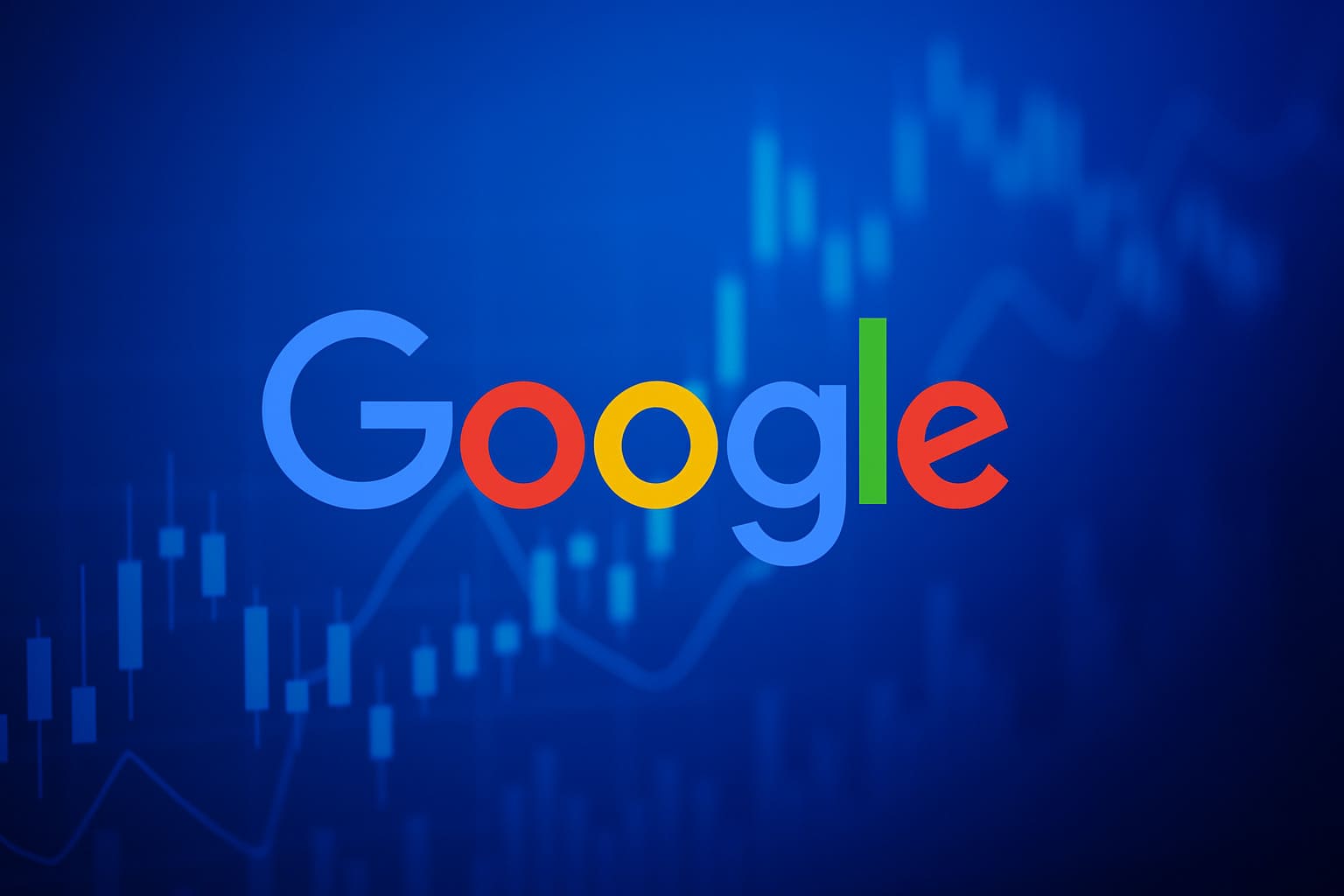In May 2025, Google did not announce any confirmed core update. But many SEOs noticed major drops and spikes in search traffic, which raised red flags across the industry. Data from tools like Semrush and RankRanger showed unusual search volatility, especially around May 9, May 16, and May 21.
The Google Search Status Dashboard listed no “incident” or core update in May. And Danny Sullivan, Google’s Search Liaison, made no official statement. The last confirmed algorithm event was the March 2025 Core Update, which finished rolling out on March 27, 2025.
Experts believe it was an unconfirmed algorithm update—likely part of Google’s usual testing and adjustments. No formal rollout. whatever happened in May 2025 was an unconfirmed change – part of Google’s normal ongoing tweaks – rather than a named core update.
During the same time, Google held its I/O 2025 conference, where it launched new AI search features like Search Generative Experience (SGE) and AI Overviews. However, Google clarified that these AI tools focus on user experience and do not directly impact rankings.
SEOs saw major changes in website rankings, especially for content-heavy sites, publishers, and affiliate blogs. Some dropped without warning. Others gained overnight. Without any guidance from Google, teams had to rely on traffic logs, visibility charts.
Google Search Update May 2025: Surge in SERP Volatility and Expert Reactions
In mid-May 2025, Google’s search results went into visible turmoil. On May 12–13, and again from May 16 to May 21, ranking charts across Semrush, MozCast, and RankRanger all lit up with turbulence. Semrush Sensor reported volatility scores around 9.2–9.3, and MozCast spiked over 115°F, indicating high algorithmic movement without any official confirmation.
The chaos was so intense that some experts called it a Googlequake. Barry Schwartz wrote about the “super heated volatility” on May 12–13 and dubbed it the Google I/O 2025 Unconfirmed Update, since it overlapped with the launch of Search Generative Experience (SGE). Barry clarified there was no official core update announced, but the effects were undeniable.
Meanwhile, Glenn Gabe pointed out that websites hit by the March 2025 Core Update suddenly saw recovery in early May, while others that gained earlier began dropping again. He suggested Google may have silently adjusted a core ranking signal or quality system during this period.
Marie Haynes noted that Google’s AI Mode and SGE were expanded to a broader US audience on May 1. She warned that sudden traffic gains or losses could be tied to new SERP behavior, like zero-click answers from AI tools. Still, she confirmed no Helpful Content Update or Core Update had been logged by Google during May.
Lily Ray emphasized E-E-A-T, noting that some forums like ProBoards lost visibility despite Google’s earlier forum preference boost. She suggested Google may be dialing back reliance on user-generated content in favor of expert-authored material. Her message: websites that focus on real trust, authority, and people-first content continue to perform better—even when algorithms shift silently.
Other SEOs echoed this, calling May 2025 the AI Search Shake-Up. While some site owners celebrated doubling traffic overnight, others saw a total collapse in visibility. Tools like Sistrix and seoClarity tracked vertical-specific tremors, and the debate continues: Was this AI behavior change, a rerun of March’s quality signals, or something entirely new?
What Changed? Key Focus Areas of the May 2025 Algorithm Shift
Even without a formal update label from Google, SEO experts uncovered sharp patterns in rankings and visibility. These shifts appear to reflect deeper tuning of existing systems — especially the Helpful Content System, SpamBrain, and link devaluation logic. Below are the four key areas where algorithmic pressure points were likely applied.
Content Quality and Helpful Content Signals
Sites that offered thin or AI-written filler content without real user value were demoted. This aligns with what Barry Schwartz reported: unhelpful content was further pushed down . Google’s Helpful Content System seemed refreshed, resulting in a reported 40% reduction in low-value pages from search results.
The focus stayed clear: people-first content wins. Pages with original insight, first-hand experience, or expert commentary gained visibility. Those just stitching facts for SEO lost rankings.
Spam Reduction and AI-Generated Content Detection
Google’s AI spam system SpamBrain appeared more aggressive. Sites using scraped content, spun text, or fake E-E-A-T tactics (like dummy bios) saw losses. The May 2025 Quality Rater Guidelines update flagged fake trust signals , hinting at a parallel algorithm tweak.
Google emphasized that content should be real, original, and reliable. Even if AI is used, human oversight and unique value are mandatory.
Link Profile Devaluation and Backlink Filtering
One quiet shift was in Google Search Console’s link report. Many websites saw 30–60% backlink drops . This did not mean penalties, but rather that Google began ignoring poor-quality links.
Some links vanished due to deindexing of spammy pages, while others were silently discounted. One webmaster noted “over 1,000 good links vanished overnight” . It suggests Google is refining which links truly count for authority.
User Experience and Technical Site Performance
Sites with fast loading, mobile usability, and no intrusive popups seemed safer. Google continues to reward websites that meet Core Web Vitals and other Page Experience standards . The algorithm may not drop you instantly for technical issues, but it will favor competitors who offer better UX, especially in AI-enhanced search layouts.
During Google I/O 2025, they hinted at AI Overviews depending on clear content structure, giving an edge to sites using proper headings and schema.
May 2025 Google Update Impact on Websites and Niches
The May 2025 Google update caused unexpected search traffic shifts across many industries. The update was broad, not limited to one sector, and affected both global websites and local businesses. From health and finance blogs to affiliate stores and news publishers, the impact was sharp and uneven.
SEO experts believe Google quietly refined multiple quality signals, causing major volatility across trusted and low-trust sites alike. Below are the niche-wise effects reported during and after the update.
Health and Finance Sites (YMYL)
YMYL websites in health and finance niches saw the most fluctuation during May 2025. Google’s E-E-A-T systems seemed to favor high-authority medical and financial publishers. Some niche bloggers lost visibility, while expert-backed content rose again .
E-commerce and Affiliate Marketing
Affiliate sites saw some of the biggest gains, especially those with in-depth reviews. Google’s Reviews System rewarded expert content while trimming thin listicles. E-commerce sites with weak UX or product content were hit more randomly .
News and Media Publishers (Google Discover)
Many news outlets experienced unstable traffic from Google Discover. Articles vanished and returned day-to-day. This inconsistency mirrored Google’s AI-driven SERP tests and content freshness balancing acts .
Forums and UGC Sites
Google likely rolled back the 2023 “forum boost.” Platforms like ProBoards saw visibility drops. SEO experts suggest this shift is due to Google reassessing the value of user-generated content in response to spam or low-value threads .
Local SEO and Small Businesses
While the biggest shockwaves hit global indexes, some local SEOs noted Map Pack and local rank movement. The changes were subtle but suggested Google was tweaking quality signals even in localized search results .
Sites saw extreme traffic shifts, from -60% to +90% within days. Recovery patterns echoed earlier core updates. One forum post called it “a rollercoaster ride,” while some site owners even considered shutting down due to losses .
Data from SEO Tool Providers: Volatility Metrics & Analysis
Several trusted SEO platforms detected major volatility across Google search in May 2025. Each tool captured strong ranking swings—proof that something algorithmic was at play even without Google’s confirmation.
Semrush Sensor showed extreme spikes on May 13 and May 21. Its desktop index touched 9.2—one of the highest outside a core update. Mobile search showed similar turbulence. Normally, a score above 9 signals a massive index shift. Their category data also confirmed widespread SERP movement across health, travel, tech, and more.
Rank Ranger recorded a surge between May 16 and May 21. Their Rank Risk Index flashed red on May 18. Changes were deeper on page one, hinting that Google shuffled top results. Barry Schwartz and Mordy Oberstein both noted this pattern matched past core updates.
MozCast tracked temperature highs above 120°F across multiple days—especially on May 17 and May 20. This is far above its baseline of 70°F. Moz’s data reflected consistent ranking flux from May 11 through May 21, aligning with a gradual, wave-based rollout.
Sistrix also reported visibility fluctuations across domains in Europe. Notably, May 13 and May 20 marked key turbulence dates in their visibility index. Although not labeled a core update, the trend resembled Q2 movements tracked in their IndexWatch. Niches like health, finance, and reference sites showed measurable shifts.
Other tools like AccuRanker, Advanced Web Ranking, and SERPmetrics confirmed similar spikes. AccuRanker’s “Grump” mood turned furious for several days, while Advanced Web Ranking charts peaked on May 20. SERPmetrics summarized the event visually, suggesting “if it quacks like a duck… it probably is an update.”
All data points from these tools showed tight alignment. Volatility was not isolated. It hit broad sectors, multiple countries, and both mobile and desktop indexes. The consistency across these sources confirms that Google’s algorithm did experience real turbulence—even if unnamed. From an SEO lens, the May 2025 changes behaved just like a classic core update.
Conclusion
The May 2025 Google Search update felt like a real core update, even without official confirmation. Sites with strong E-E-A-T and user-first content gained visibility. Others with thin pages or outdated tactics lost rankings. SEO tools like Semrush and MozCast showed high volatility, matching what site owners saw.
Google’s silence did not stop the impact. This update proves that improving content quality, user experience, and trust signals is the only safe path. Search algorithms are changing fast with AI. Websites must adapt by focusing on real value, not tricks. If content helps people clearly, rankings stay strong—even when updates roll out quietly.






